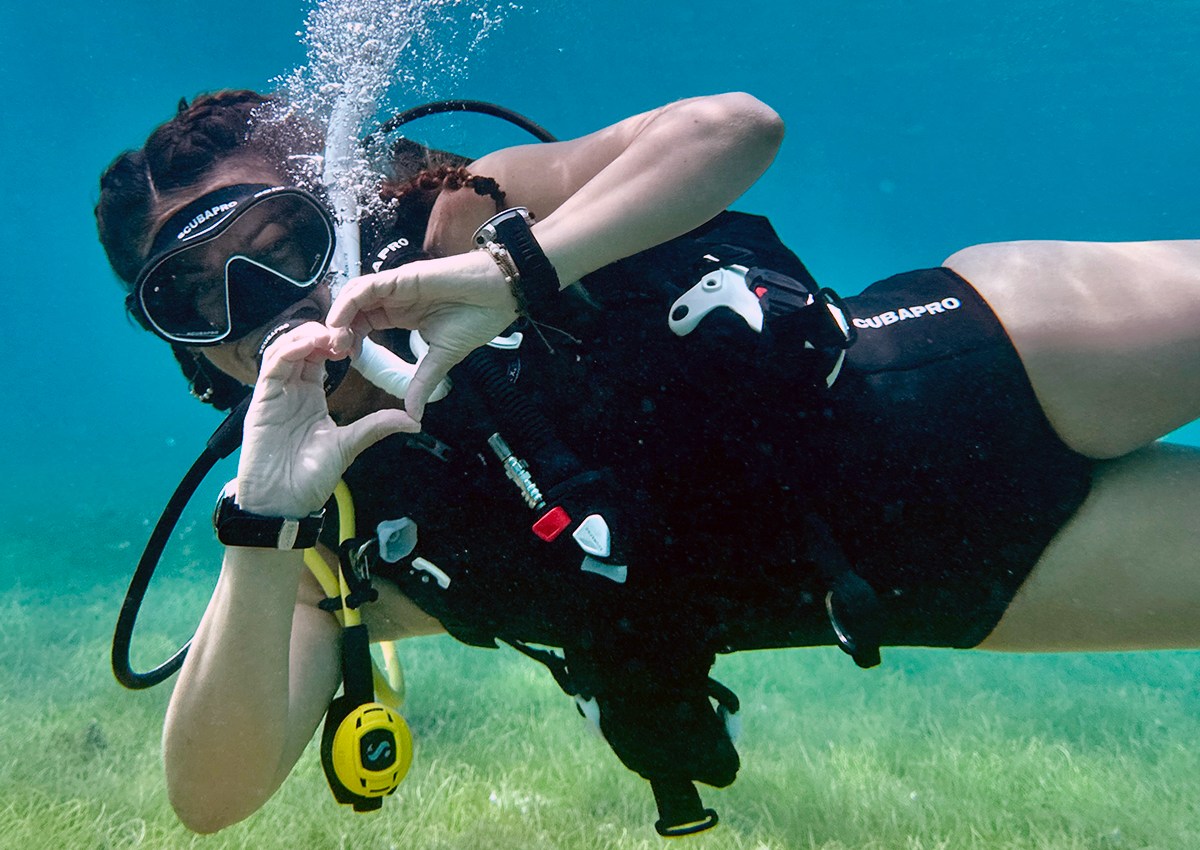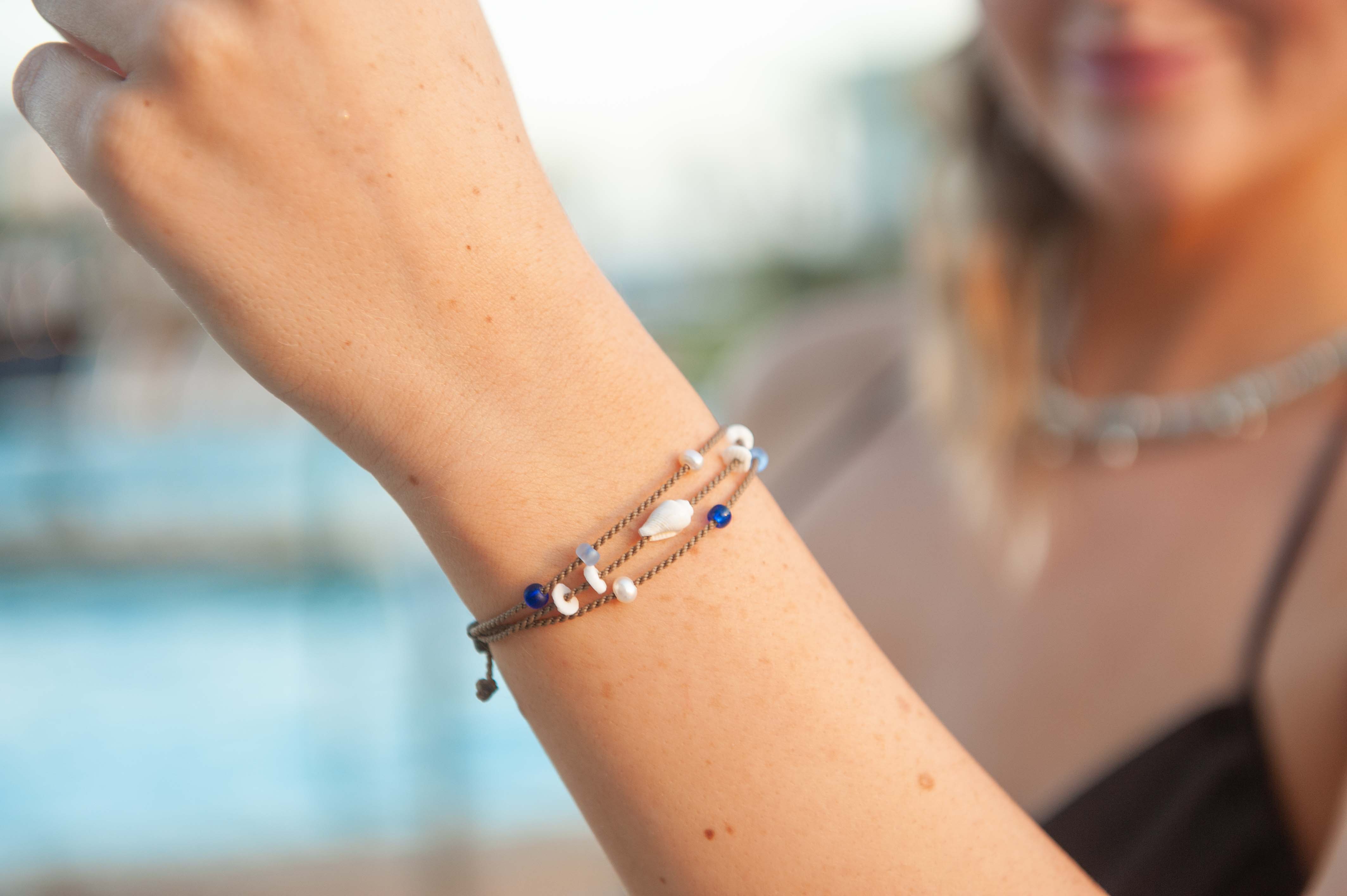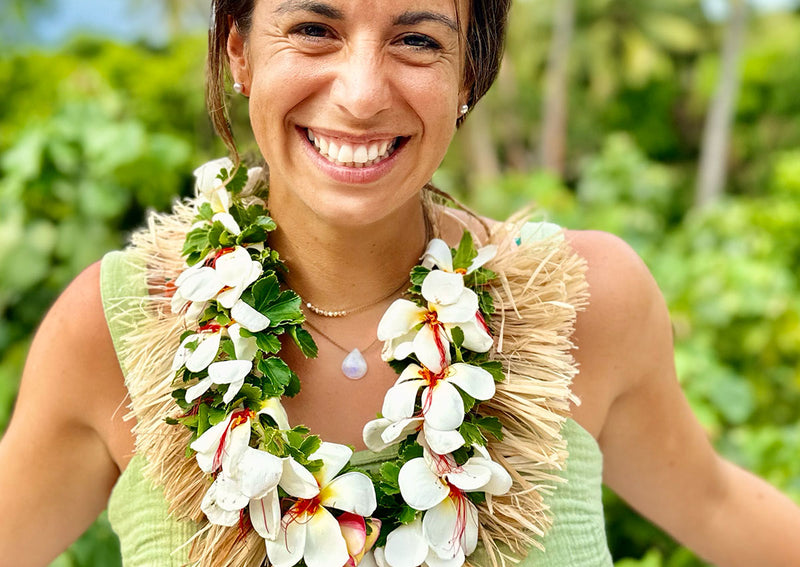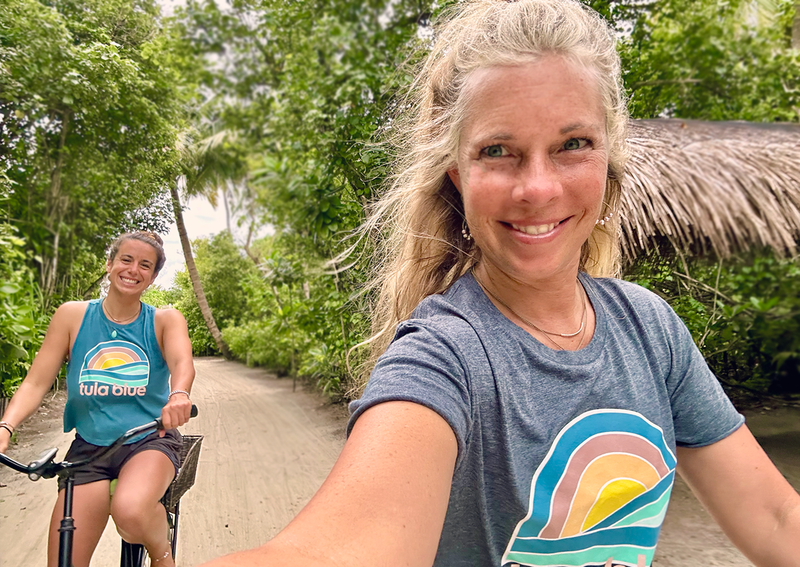
Tula Blue’s Top Ten Tips To Save the Ocean

Save the ocean with charity jewelry that is sustainable, waterproof and eco-friendly.
There’s a reason the word blue is in our name. Because we’re all about the blue. Our humble roots started in the ocean, with owner and founder of Tula Blue, Heather Stringer, falling in love with and then working to protect the ocean through her eco-jewelry line thanks to scuba diving. Created to be both waterproof jewelry and sustainable jewelry, our designs are inspired by our blue planet.
A sustainable and minimalist jewelry brand, Tula Blue ascended from the depths of our team’s shared love for the ocean. Tula Blue is made specifically with sustainability and eco-friendliness in mind – to support those who love and advocate for the oceans, with crystals and gemstones representing the various healing powers the ocean can provide and serving as a reminder that it will take a community of like-minded to keep our ocean beautiful and healthy.
Whether you surf, sail, paddle board, swim or dive beneath the surface, Tula Blue eco-friendly jewelry can go with you on every watery adventure while serving as a constant reminder of the beautiful blue that deserves saving.
Our inspiration is also the very thing that gives our planet life. In addition to being one third of the world’s primary source of protein, the oceans produce more oxygen than all the rainforests combined, control our planet’s weather, and are our best defense against global warming by absorbing carbon dioxide. But our lifeline is in trouble – and it’s up to all of us to protect our seas.
So, here’s some of our team’s top ten tips to save the ocean.

Tula Blue Seven Seas Bracelet benefits ocean conservation and is sustainable jewelry.
1. Support organizations that protect the oceans.
There are many organizations that are doing incredible work locally and globally to save the ocean. As they are non-profits, your support will make a big difference.
That’s why Tula Blue has partnered with PADI and PADI AWARE, the world’s largest scuba diving organization, to fund ocean conservation. We’re creating eco-jewelry with a big purpose: to connect and inspire communities to create real change for our blue planet.
This month, we are thrilled to launch the Seven Seas Bracelet, with 10% of the proceeds going to PADI Aware. Tula Blue became inspired by their Dive Against Debris program and wanted to help fund their program to rid our ocean of trash. That’s when we came up with a charity bracelet to protect our oceans. Jewelry really can save the oceans.
The Seven Seas bracelet has 7 pearls and stones to represent the seven seas and are connected with hand spun rope, intertwined like we all are with our planet, reminding us of our strength together.

Tula Blue’s new charity bracelet is called The Seven Seas and benefits PADI Aware who focuses on ocean conservation.
2. Vote with your dollars
Every buying decision you make has the power to change the world a little, and you should be aware of this. It’s how you start wielding that power for good.
Buy things that support the world you want to see.
Making small changes on an individual level can collectively result in big change for our blue planet. Where possible, choose natural products. Materials matter. Don’t put more plastic or chemicals in the world. Think about what you are buying, where it was made, how it was produced and even how it was packaged. Support ethical businesses who produce sustainable products.
And, the less something is processed – whether that is food, clothing or jewelry – the better. Tula Blue is obsessed with using natural elements in our eco-friendly and sustainable bracelets, necklaces, anklets and earrings. However, you won’t see anything in our jewelry that harms the ocean like shark teeth or coral. Products like this support unsustainable practices and threaten important species and also critical ecosystems.
Jewelry can be sustainable both in materials and in practices. Tula Blue uses ethically sourced stones that come from mines that prioritize the environment and the worker’s well-being. We hand-spin nautical rope made from organic materials with minimal waste and eco-friendly processes. Yes, jewelry can be sustainable! It's important to consider the materials and practices used throughout the jewelry's life cycle to determine its overall sustainability. What’s more, bracelets like the Seven Seas bracelet also benefit ocean conservation.

Rope jewelry that saves the ocean.
3. Reduce, Reuse, Recycle
Reduce, reuse, recycle… and make our oceans happy. Marine debris can be harmful to coral reefs, marine animals, and ultimately, us.
Of the 8.3 billion metric tons of plastic we’ve collectively manufactured date, it is estimated only nine percent has ever been recycled. Approximately 11 million metric tons of this plastic end up in the ocean every year, with this number expected to triple by 2040.
According to National Geographic, 73% of all beach litter is plastic. What’s more, 90% of plastic polluting our oceans is carried by just 10 rivers.
One of the easiest ways to help waterways in your local area is to dispose properly of trash and also pick up any trash you find. On beaches, make sure you leave no trash behind, and never throw or leave any cigarette butts in the sand. This helps keep trash out of the oceans and also out of landfills where it can have an adverse impact on the water quality of our rivers and oceans.
Avoid making trash whenever possible. Choose products that have limited packaging – and ideally, reusable packaging. This limits the amount of trash that you are putting back into the environment. From the start, Tula Blue has always been an eco-friendly jewelry company – which includes the way we approach our packaging. Our sustainable packaging is free of plastic, but what’s more, it’s also highly reusable. Our cloth bags are the perfect travel companion for chargers, change and other small items.

Tula Blue Seven Seas Bracelet is waterproof jewelry that allows ocean lovers to protect what they love.
4. Make Your Voice Count and Vote
Every voice and every vote can make a difference. Support legislation that protects our blue planet, make your voting decisions carefully and sign petitions that ensure politicians hear your voice!
Electing public officials that stand for our blue planet means our voice will be exponentially stronger and will help us protect our oceans. And don’t let Election Day be the last time you support your candidate. Follow up with them and let them know about the issues and policies you care about. Don’t be shy! Our blue planet needs you. Ensure they support more protection for the ocean – like marine protected areas.

Tula Blue Seven Seas Bracelet is perfectly waterproof, sustainable and eco-friendly.
5. Become an Ocean Explorer
Jacques-Yves Cousteau said “People protect what they love.” We couldn’t agree more. So get out and explore the ocean. Tula Blue was founded by a scuba diver – and many on our team have fallen in love with the ocean – and in turn become advocates for it.
There is no better reason to become a PADI Open Water Diver than the fact that once you are certified you can have a literal hands-on role in saving the ocean and helping eliminate a side of plastic from our food menu once and for all.
Did you know that the majority of divers have also appointed themselves as ocean trash collectors? PADI Divers have the unique ability to physically remove and report marine debris beneath the surface. The PADI AWARE Foundation launched Dive Against Debris over a decade ago and since then more than 30,000 divers in over 50 countries have taken part in removing plastic from our oceans, creating the world’s largest marine debris database which has supported many laws globally banning the use of plastic bags. That’s why Tula Blue is so excited to support them with the Seven Seas charity bracelet!

Get physical- keep pollution at bay by walking or riding a bike instead of driving.
6. Get Your Steps In
In addition to improving your physical fitness, you can also improve the health of the planet when you prioritize walking over driving.
Use environmentally friendly modes of transportation whenever possible to limit pollution. Instead of driving a car, try to walk, bike, or use public transport (like buses and trains) more often. If you are planning to buy a car, choose a fuel-efficient vehicle like a hybrid or electric car. Using these cleaner transportation methods can help reduce the amount of greenhouse gases that are emitted into the atmosphere. These emissions contribute to ocean acidification and increased ocean temperature. More acidic ocean waters impede coral growth and warmer waters cause coral bleaching – which is one of the most important ecosystems in our oceans.
7. Forget Disposable Fashion
Do you really need that new top or dress in the latest color or trend? Sure, it may be cheap – but fast fashion is having a huge impact on our oceans. Disposable fashion is just that – and often it ends up in a landfill after a single season. But there is a much bigger issue with it as well.
Much of the fast fashion is made from synthetic fibers like polyester which are causing our planet even more harm. Right now, it’s estimated that fibers are, by count, the single largest contributor to watershed plastic pollution in developed countries. Synthetic fibers produce microplastics when washed. Since over 60% of fabric produced by the textiles industry in 2020 was polyester, that translates into 1.7 million tons of microfibers are released into the ocean every year!
Did you know that one fleece jacket could shed up to 250,000 pieces per garment per wash. New York City, alone, could have 6.8 billion microfibers flowing into its harbor every day.
Buy quality products made from organic materials. And buy them to last.
Tula Blue eco-jewelry is hand-woven to stand the test of time. Timeless and chic, you won’t need to replace your waterproof bracelets and sustainable necklaces. The nautical rope and organic stones and pearls are the perfect complement to any outfit or bathing suit – and can take whatever you throw at them. Tula Blue eco-friendly jewelry is the opposite of disposable fashion – it lasts longer, reducing the need to buy new pieces. And what’s more beautiful than wearing just that?

Double think using single-use plastics; many of them end up in our oceans.
8. Reduce your use of plastic
Although we all know this, the data is shocking when it comes to just how much we’ve collectively put our planet at risk – especially when it comes to polluting the 70% of the planet that gives us life! Did you know that on average, we ingest about one credit card worth of plastic a week primarily through water source pollution, according to 2019 Australia’s University of Newcastle study.
In recent years we’ve grown more aware of the invisible plastic problem, with particles found in locations as remote as the Arctic and Antarctic Oceans. Plastic is in our water, soil and the air we breathe. But it’s in the ocean that they find their way into our food systems. It is now estimated for every pound of phytoplankton, there are 6 pounds of plastic in the ocean. And last week, scientists identified the first microplastics in human blood.
These past several years thanks to the pandemic have been especially hard on all of us – including the plastic. What was considered taboo and even banned in some places was reintroduced and re-accepted as the norm to ensure we were staying germ-free. Plastic bags, take-out containers, plastic straws and utensils, and plastic wrap all found their way back into many of our lives and homes.
We’ve learned a lot – and it’s time to regroup. Be conscious of limiting the amount of single-use plastic wherever possible. The next time you order out, be conscious of not taking plastic straws, cups or utensils with you for that takeaway meal and use your own at home. Stop using plastic bags, plastic wrap, and single-use items – there are plenty of other options from biodegradable materials to silicone to beeswax wraps. It’s time to give our waterways a break.
9. Choose the fish you consume wisely.
If you choose to eat fish, ensure they are caught sustainably and are on the “green” list of fish to eat in your local area. You can easily download a card to carry in your wallet in your region. Overfishing continues to be one of the major threats to reefs, as many reefs depend on fish and other marine creatures to survive. As of 2017, only 65% of global fish stocks were at sustainable levels.

Be a coral reef hero by keeping chemicals out of the ocean.
10. Keep Chemicals out of the Ocean
Hopefully, you now know that oxybenzone (found in many sunscreens) bleaches coral and kills larvae – or if you missed that news, check out these reports from the United Nations, or this article about the best natural sunscreens. Although there are certainly greater threats to our waters than the sunscreens and shampoos that we choose to use, the drops in the bucket do add up. When we use knowledge that has been documented by scientists around the world – and read the ingredients in the products we choose — we can minimize our impact on the planet and beloved coral reefs.






Leave a comment
This site is protected by hCaptcha and the hCaptcha Privacy Policy and Terms of Service apply.